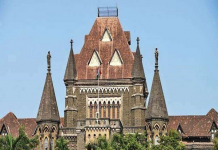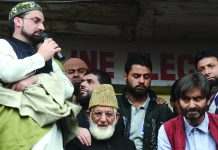[cycloneslider id=”aadgoodwill-hunting”]
On tables placed eight feet long and two feet wide, four men efficiently stack up postcards in a dozen rows. Look closer and they are Indian Postal Orders, or money sent by post. The senders are Indian citizens from across the land. They have sent a rupee or two. Some have sent ten. But denomination is not the real value here. Faith is. This is how tens of thousands of people of little means are coming to the aid of the Aam Aadmi Party (AAP), the newest and the most sensational kid on India’s political block. They are sending their hard-earned tenner because this cheeky 14-month-old party, born from an anti-corruption movement, has vowed to oust entrenched overlords of India’s decadent politics and replace them with greenhorns with no experience of bigstake electoral politics except of the last few months that sensationally won them power in Delhi.
And there’s no mistaking the frothy confidence of The Incorruptibles at the party’s cramped headquarters in a smoggy suburb known as Kaushambi in Ghaziabad district of Uttar Pradesh just east of New Delhi. A festive air manifests at the three-storied building, which was meant to be a private residence and which sits at the end of a lane of similarly unfashionably built private residences. Twenty- something men briskly dip into cardboard cartons to sell, for Rs 5 apiece, white Gandhi caps with Main Hoon Aam Aadmi (I am the common man) printed on their sides.
For another fiver, you can have a metal badge with a picture of the party’s ‘convener’, Arvind Kejriwal, who sensationally led the mass movement for government accountability nearly two years ago that birthed the party and made him Delhi’s chief minister on 28 December. For Rs 40, you get a copy of Kejriwal’s book titled Swaraj (self-rule) that is the party’s bible. At an adjacent table, people crowd in for walk-in registration to become a primary member of the party. Three live TV trucks are parked around, one shedding copious smoke from a diesel generator. Community waste lies dumped in an empty housing plot behind the volunteer desks, but no one seems to mind.
For a party that is hot on the heels of India’s two biggest political parties — the Congress and the Bharatiya Janata Party (BJP) — and threatens to ruin this summer’s Lok Sabha election for them, the AAP headquarters is a study in contrast to the expansive British-built bungalows that house the national offices of the two parties just minutes’ drive away from Parliament. Unlike theirs, the entrance to the AAP headquarters or any of its floors is unguarded. And anyone generally does walk in, adding to the heady bustle.
[egpost postid=”207979″]
There isn’t a recognisable face, because nearly everyone in this army of volunteers is a rookie, the most experienced being less than three years old in public life since the anti-corruption movement broke out in April 2011. But a super-fast baptism by fire since the party decided a few months ago to fight the elections to the 70-seat Delhi Assembly has made everyone here seasoned, minus, of course, the slick and the glib of the professional politicians.
On the ground and the first floors, volunteers — most under 30 but a few salt-and- pepper types, too — zip about busily. A woman talks patiently with a visitor who fancies his chances as a candidate for the Lok Sabha. (She clearly doesn’t but is too polite to shoo him away.) An oldish man fires questions at someone at the other end of a mobile phone in Jammu: why hasn’t the committee yet been formed? How many people joined the last meeting? What about fund collection? And gave advice, too: be sure of who you bring in; we don’t compromise on integrity.
A coat of dust rests on three steel cabinets of uneven sizes lining a wall. A few awards are strewn atop them. One reads “Man of the Year Award to Anna Hazare and his team, 2011”. A bouquet of flowers in a bamboo basket sits atop another cabinet as it must have been brought in days ago, for the flowers have shrivelled inside their transparent paper wrapping.
The cabinets themselves are full of files, folders and books. The last include names such as Panchayat Raj Manual, Militants Citizens, Land Acquisition Act, The Tamil Nadu Panchayats Act, 1994, and Forgotten Warriors: Indian War of Independence 1941-48/Indian National Army. Hardly any appear to have been read lately. A recent entrant on a shelf though is a thin green book titled Delhi Assembly Rules.
Betraying no specific scheme, party posters, pamphlets, notices and calendars are pasted or strung on the walls. But a framed and garlanded picture stands out: a close-up of a grinning young woman with “shaheed (martyr) Santosh Koli, 1984-2013” written under it. A Dalit activist who was one of Kejriwal’s longtime associates, Koli died in July after a motorcycle on which she was riding pillion was hit by a car. Party leaders cried foul, because she had been named a candidate for a Delhi Assembly seat, but police never caught the car driver. (Not unlike the traditional parties, AAP instead fielded her brother from the seat; he won as one of the party’s 28 MLAs.) Perhaps the only indulgence in the room is a broom — the party’s by-now widely recognised election symbol — painted golden and then sprinkled with gold dust, pinned to the wall next to Koli’s picture.
On the ground floor, a sheet of white paper with donations printed on it is taped at the bottom of a huge board that says “Yeh desh ke liye tan man aur dhan nyochhavar karne ka avsar hai (this is an opportunity to dedicate your body, mind and money for the nation)”. Under the intense gaze of Kejriwal, who stares out from the board, a clutch of volunteers explains transparency rules to visitors enquiring about how to donate.
From the first-floor balcony, another youthful volunteer leans and bellows instructions on the time slots for television reporters to interview a party spokesperson that evening. A few men in khadi kurta-pyjama, the standard threads for old-style politicians, troll the building’s outer precincts and are clearly outsiders seeking perhaps a way to ease into the party.
Catapulted to a dream run with few parallels in Independent India’s political history, AAP is, however, aware it is racing against time vis-à-vis the elections to the 543 seats of the Lok Sabha due in another four months. Too much has happened for it and too quickly. As party ideologue, scholar-psephologist-turned-politician Yogendra Yadav, told TEHELKA that the party does not have the organisation and the people of the required calibre to mount the mammoth operation increasingly being expected of it as a serious national alternative to the Congress and the BJP.
The populist decisions of the Kejriwal government to provide 667 litres of water free daily to each household in Delhi, halve the electricity tariff, and get the Comptroller and Auditor General to fine comb through the accounts of the power distribution companies, have already pushed the traditional political parties on the back foot.
Plus the symbolic gestures, such as not accepting police protection normally due to a chief minister or ministers, and doing away with flashing beacons on their cars, have meant that AAP is setting the political agenda and not the BJP and the Congress. Disproportionate media attention has been more than welcome, as it has helped the party highlight the facts of its holier-than- thou attributes of transparent funding norms and inner-party democracy.
Indeed, although they don’t say it openly, the AAP leadership has privately begun to believe the party could well emerge as a strong contender for power at the Centre in case of a hung Parliament. Days before 2 October 2012, when Kejriwal announced that they would form a new party, a top associate of his had told this correspondent in a private conversation that a nationwide survey they had commissioned had suggested their party could win 100 Lok Sabha seats. If it seemed fanciful then, a few in the party’s top rung now believe the figure could be within grasp.
But there are many issues of concern. The party has a woefully inadequate number of recognisable faces at the top. Of strategists and those with experience of governance, there are fewer. Having arisen from a popular anti-government movement, the party is deliberately peopled, including at the highest levels, by many who were political nonentities until yesterday.
Indeed, three of the party’s ministers in Delhi — Law Minister Somnath Bharti, Transport Minister Saurabh Bhardwaj and Women and Child Welfare Minister Rakhi Birla — did not have prominent roles in the movement of 2011 led by Anna Hazare and Kejriwal that demanded that Parliament legislate into existence a public ombudsman — the Lokpal — to investigate and prosecute the mightiest public servants, including the prime minister, on charges of corruption. None of the three ministers is even a member of AAP’s national executive, its highest decision-making body.
Party leaders have also been concerned by a succession of events that have exposed its ministers as being wet behind the ears — all in under two weeks of coming to power. Birla was mocked when she filed a police case after a stray ball from a playground smashed her car’s windscreen. Health Minister SK Jain hastily backtracked after appearing callous in response to a question about a dead infant found in a hospital’s dump. (He had suggested that he was not answerable as a private hospital was involved.) And Law Minister Bharti was reported to have committed a faux pas by asking for a meeting with Delhi’s district judges, over whom he has no jurisdiction.
Following these hiccups, a quick word has gone out to the ministers to leave the talking to, apart from the spokespersons, Kejriwal and his closest associate, Urban Planning, PWD and Education Minister Manish Sisodia, a soft-spoken campaigner credited with running the massive India Against Corruption, the impromptu name given to the Hazare- and Kejriwal-led movement of 2011. Now that both Kejriwal and Sisodia are being sucked into the big task of implementing the party’s manifesto for Delhi, which would play a huge role in building the party’s attractiveness at the Lok Sabha election, the party is left with few others at the top to devote full-time to party work.
Only two other leaders are of Kejriwal’s stature and acumen in the party: Yadav and Supreme Court lawyer Prashant Bhushan. But Yadav has decided to devote himself entirely to defeating the Congress party in Haryana where it currently holds all 10 Lok Sabha seats, as well as in the Assembly election, which is due in October this year, to oust the Congress’ state government.
On a brief visit to the party headquarters this week, Yadav expressed his anguish in a closed-door meeting with a battery of party spokespersons, whom he is supposed to lead and mentor, that he would increasingly find it difficult to manage Haryana as well as the party’s communications.
Next in terms of gravitas are Gopal Rai, who has been associated with people’s movements, and Shazia Ilmi, a television news anchor turned anti-graft campaigner, both of whom unexpectedly lost last month’s Assembly election. Both were certain to become ministers had they won. But both are now at a loose end, trying to figure out their role and future action within the party.
If the top ranks are thin in Delhi, the party’s ranks may well be non-existent in the rest of the country. Despite photo-ops that have played up Gandhi cap-wearing party men and women in different cities, the party’s existence in most places is but a whisper.
In Maharashtra, for example, the designated leadership is more Mumbai-centric and has little on-ground engagement across India’s second most populous state of 11 crore people.
In Uttar Pradesh, the biggest battleground for some of India’s biggest parties — the Congress, the BJP, the Samajwadi Party and the Bahujan Samaj Party — the AAP leadership is forgettably uninspiring. The lack of cadres would mean it would need to depend only on its general goodwill to hope for substantial votes, especially in the rural areas.
To overcome this hazard in the short run, the party is actively considering inducting regular politicians, who may have been with other parties but who have a clean image. But politics being a cesspool, as Amitabh Bachchan famously described it nearly 30 years ago during his brief stint as a Lok Sabha MP, AAP is finding it extremely difficult to find politicians at that high a bar. The party has especially been meeting some Muslim leaders, including two former MPs and a sitting MP, but nothing has come of those discussions yet.
Meanwhile, impostors have become a threat: Bihar’s capital Patna has been abuzz that a mafia shooter was seen wearing the AAP cap and claiming that he has joined the party. That’s one Aam Aadmi the party could and should do without.
With inputs from Avalok Langer
ajit@tehelka.com













